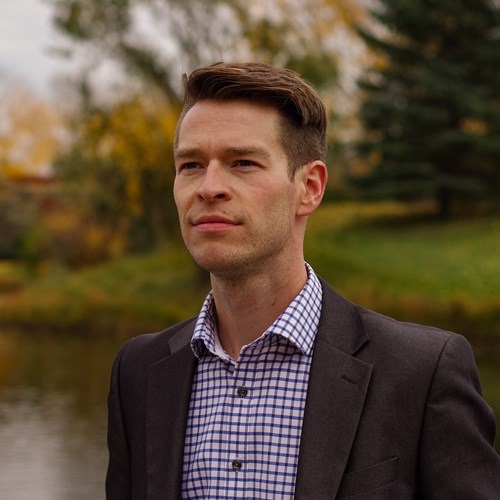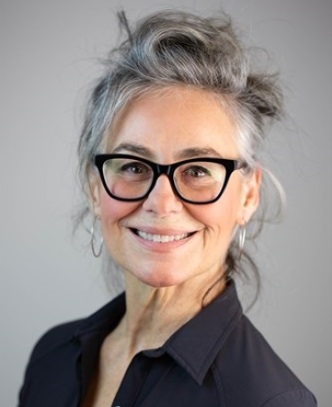Community
When mental illness runs in the family… A local story about battling with mental health issues

Bell really started something great when they launched Bell Let’s Talk Day. With the help of celebrities from across Canada and beyond, Let’s Talk Day has definitely started a conversation about mental health. So many people have come forward to say they are suffering. So many others have learned to be more thoughtful and to listen.
We are delighted to share this incredible post from a young mother in Red Deer who has come forward courageously with her story. Kristen Bellows advocates for mental health and suicide prevention. She also works as a mortgage broker. Here’s her story…
Mental Illness unfortunately runs in my family. From the time that I was 8 or 9, I remember laying in my bed for what seemed like hours, trying to go to sleep. I worried about everything and everyone. I didn’t know it at the time, but I obviously had anxiety. What I also didn’t realize at the time, was that my Dad was dealing with severe mental health issues, which he self medicated with alcohol and prescription drugs, for all of his adult life. I worried about him, a lot.
I remember when I was 9 or 10, his next door neighbour took his own life, along with his daughter’s, on Mother’s Day. My Dad was appalled that this man not only did this to himself, but his poor little girl; he was also fascinated by it. He paced the back yard for the afternoon, waiting for the medical examiner & police to come, to see what would happen. I think that this was a pivotal point in his mental health journey. Over the next 3 years, he had 2 of his own suicide attempts, and at least one stay as psychiatric inpatient. I didn’t understand how he could be doing this; how could he know how much this was hurting his family, yet still want to “leave”? Thankfully I still don’t understand that. The year I turned 15, my Dad took his life, in the exact same way as his neighbour, a few years before. Thankfully it didn’t happen in our home, and neither my Mom or I found him, but somebody had to, and I bet he was never the same after.
??It was during this time that I learned how depression and anxiety really can eat a person up. For the next year, I simply existed. I was dead to the world. I went to school, but I wasn’t “there”, and I have the attendance records to prove it. I managed to pull myself together the following year, and barely finished high school. Thankfully, I did much better in college, but I still struggled. I took antidepressants from 18-21, and went without them for 10 years; this was mostly a pride thing. Truthfully, I should have never stopped taking them. I went through more major bouts of depression than I care to admit in that 10 year period, including 2 stints of postpartum depression. That’s a real thing too, by the way! I did all the “right things”. I went to prenatal counselling, talked with my doctor, attended postpartum support groups – and I still “got” it. It makes sense when you think about it: lets double or triple your hormones, then take them all away. Next, you’re going to be the sole source of food for this little being every 1.5-4 hours for the next year, and only leave the house weekly. It was worse the second time. I cried when I found out I was pregnant again, not because I was excited (which I was), but I was also scared shitless to possibly experience that again. I was fine for the first few months. I had a baby who finally slept, but PPD is a sneaky bugger, and it got me again. Hard.
??I got “better” and then I had the surgeries from hell a couple years later. This definitely sent me for a loop. Something about horrific pain, and spending months on end housebound, just doesn’t do it for me LOL. Then on January 28th 2016, a post surgical blood clot (that I didn’t know I had) moved into my lung, and just about killed me. By July of 2016, I knew that I was not okay, and decided to finally start taking medication again. Something about that decision is SO HARD, but its okay. If you’ve tried every other way to try and avoid it, and it turns out that you just need that little pill every morning, to keep you from being a puddle on the floor, DO IT. ??This is precisely why, when I returned to work in 2017, and the stressful work environment started affecting my mental health, I QUIT. I have worked too hard, for too long, to take care of that. Any person or job who takes that from me, is not worth it.
So friends, talk about it. Surround yourself with people who support you, and you do the same. Most importantly, tell your story, until it doesn’t make you cry anymore ??.

You can find Kristen on Facebook and Instagram @fortheloveofmortgages
Community
SPARC Red Deer – Caring Adult Nominations open now!

Red Deer community let’s give a round of applause to the incredible adults shaping the future of our kids. Whether they’re a coach, neighbour, teacher, mentor, instructor, or someone special, we want to know about them!
Tell us the inspiring story of how your nominee is helping kids grow up great. We will honour the first 100 local nominees for their outstanding contributions to youth development. It’s time to highlight those who consistently go above and beyond!
To nominate, visit Events (sparcreddeer.ca)

Addictions
‘Harm Reduction’ is killing B.C.’s addicts. There’s got to be a better way

From the Frontier Centre for Public Policy
B.C. recently decriminalized the possession of small amounts of illicit drugs. The resulting explosion of addicts using drugs in public spaces, including parks and playgrounds, recently led the province’s NDP government to attempt to backtrack on this policy
Fuelled by the deadly manufactured opioid fentanyl, Canada’s national drug overdose rate stood at 19.3 people per 100,000 in 2022, a shockingly high number when compared to the European Union’s rate of just 1.8. But national statistics hide considerable geographic variation. British Columbia and Alberta together account for only a quarter of Canada’s population yet nearly half of all opioid deaths. B.C.’s 2022 death rate of 45.2/100,000 is more than double the national average, with Alberta close behind at 33.3/100,00.
In response to the drug crisis, Canada’s two western-most provinces have taken markedly divergent approaches, and in doing so have created a natural experiment with national implications.
B.C. has emphasized harm reduction, which seeks to eliminate the damaging effects of illicit drugs without actually removing them from the equation. The strategy focuses on creating access to clean drugs and includes such measures as “safe” injection sites, needle exchange programs, crack-pipe giveaways and even drug-dispensing vending machines. The approach goes so far as to distribute drugs like heroin and cocaine free of charge in the hope addicts will no longer be tempted by potentially tainted street drugs and may eventually seek help.
But safe-supply policies create many unexpected consequences. A National Post investigation found, for example, that government-supplied hydromorphone pills handed out to addicts in Vancouver are often re-sold on the street to other addicts. The sellers then use the money to purchase a street drug that provides a better high — namely, fentanyl.
Doubling down on safe supply, B.C. recently decriminalized the possession of small amounts of illicit drugs. The resulting explosion of addicts using drugs in public spaces, including parks and playgrounds, recently led the province’s NDP government to attempt to backtrack on this policy — though for now that effort has been stymied by the courts.
According to Vancouver city councillor Brian Montague, “The stats tell us that harm reduction isn’t working.” In an interview, he calls decriminalization “a disaster” and proposes a policy shift that recognizes the connection between mental illness and addiction. The province, he says, needs “massive numbers of beds in treatment facilities that deal with both addictions and long-term mental health problems (plus) access to free counselling and housing.”
In fact, Montague’s wish is coming true — one province east, in Alberta. Since the United Conservative Party was elected in 2019, Alberta has been transforming its drug addiction policy away from harm reduction and towards publicly-funded treatment and recovery efforts.
Instead of offering safe-injection sites and free drugs, Alberta is building a network of 10 therapeutic communities across the province where patients can stay for up to a year, receiving therapy and medical treatment and developing skills that will enable them to build a life outside the drug culture. All for free. The province’s first two new recovery centres opened last year in Lethbridge and Red Deer. There are currently over 29,000 addiction treatment spaces in the province.
This treatment-based strategy is in large part the work of Marshall Smith, current chief of staff to Alberta’s premier and a former addict himself, whose life story is a testament to the importance of treatment and recovery.
The sharply contrasting policies of B.C. and Alberta allow a comparison of what works and what doesn’t. A first, tentative report card on this natural experiment was produced last year in a study from Stanford University’s network on addiction policy (SNAP). Noting “a lack of policy innovation in B.C.,” where harm reduction has become the dominant policy approach, the report argues that in fact “Alberta is currently experiencing a reduction in key addiction-related harms.” But it concludes that “Canada overall, and B.C. in particular, is not yet showing the progress that the public and those impacted by drug addiction deserve.”
The report is admittedly an early analysis of these two contrasting approaches. Most of Alberta’s recovery homes are still under construction, and B.C.’s decriminalization policy is only a year old. And since the report was published, opioid death rates have inched higher in both provinces.
Still, the early returns do seem to favour Alberta’s approach. That should be regarded as good news. Society certainly has an obligation to try to help drug users. But that duty must involve more than offering addicts free drugs. Addicted people need treatment so they can kick their potentially deadly habit and go on to live healthy, meaningful lives. Dignity comes from a life of purpose and self-control, not a government-funded fix.
Susan Martinuk is a senior fellow at the Frontier Centre for Public Policy and author of the 2021 book Patients at Risk: Exposing Canada’s Health Care Crisis. A longer version of this article recently appeared at C2CJournal.ca.
-

 Housing1 day ago
Housing1 day agoTrudeau admits immigration too much for Canada to ‘absorb’ but keeps target at record high
-

 Censorship Industrial Complex1 day ago
Censorship Industrial Complex1 day agoTrudeau’s new online censorship law – Problems with Bill C-63 / the Online Arms Law
-

 conflict2 days ago
conflict2 days agoWestern leadership’s detachment from reality is causing terror and death across the globe
-

 Business1 day ago
Business1 day agoDecarbonization deal opens new chapter in Alberta-Japan relationship
-

 Energy2 days ago
Energy2 days agoNew documentary exposing climate alarmism is the latest victim of Big Tech censorship
-

 2024 City Councilor By-Election2 days ago
2024 City Councilor By-Election2 days agoGet to know your candidates for city council: Chad Krahn
-

 2024 City Councilor By-Election2 days ago
2024 City Councilor By-Election2 days agoGet to know your candidates for city council: Linda Cullen-Saik
-

 Censorship Industrial Complex2 days ago
Censorship Industrial Complex2 days agoNPR senior editor admits extreme bias in Russia collusion, Hunter Biden laptop, COVID coverage






